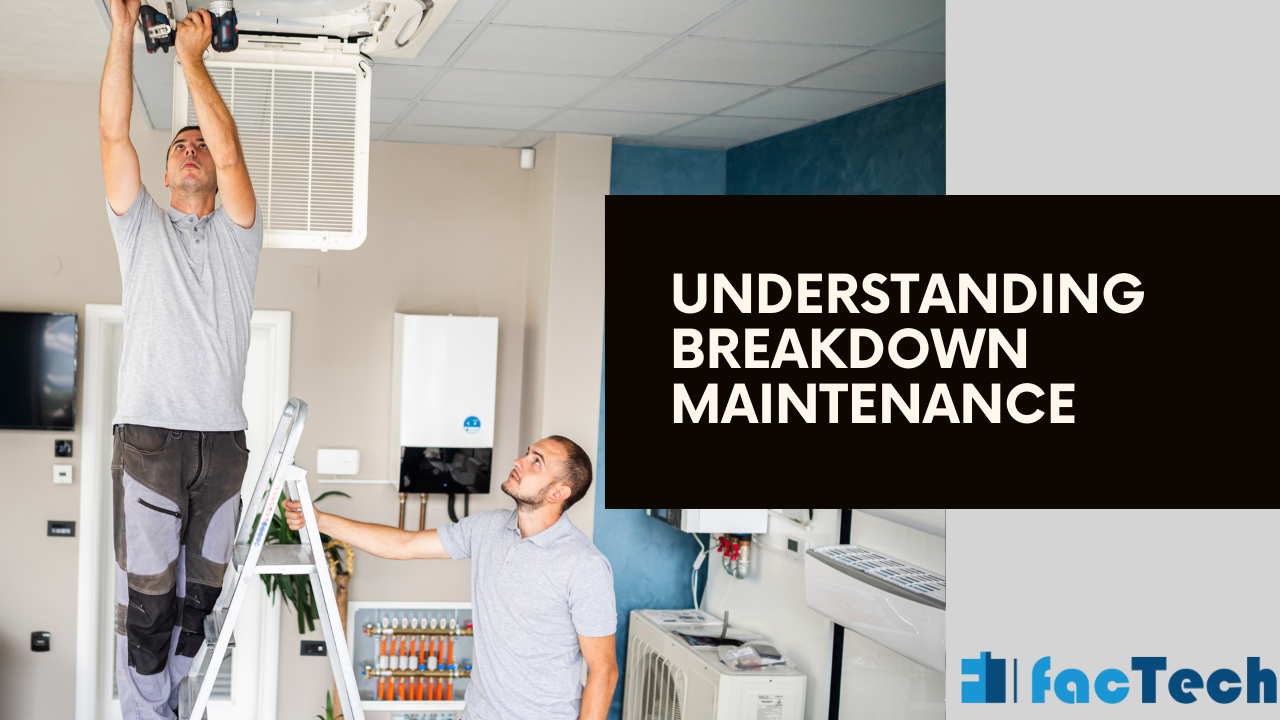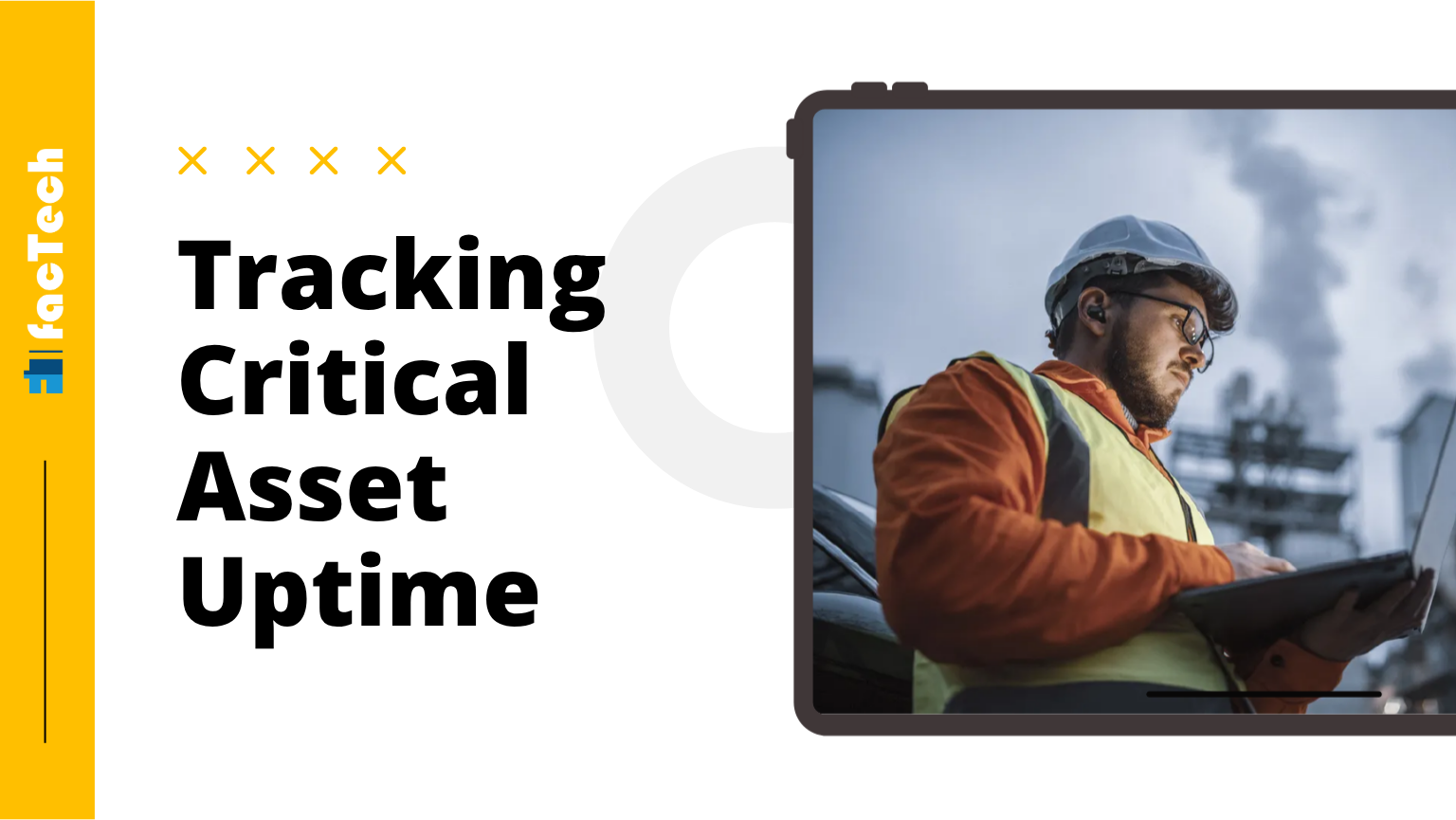What is breakdown maintenance procedure
What is breakdown maintenance procedure
Reactive or corrective maintenance, often known as breakdown maintenance, is a maintenance approach in which repairs or replacements are carried out only after an asset has broken down or malfunctioned. Breakdown maintenance is a reactive strategy that addresses problems as they occur, in contrast to preventive maintenance, which attempts to prevent failures through planned inspections and repair.
Comprehending Maintenance Breakdowns
Despite its seeming inefficiency, this tactic may work well for some resources or circumstances. For example, a breakdown maintenance method might be more economical if an item is cheap to replace or if its failure provides little danger to operations. To guarantee optimal asset performance and save downtime, however, a combination of preventive and breakdown maintenance is usually advised.
Read more: Breakdown maintenance.
The Procedure for Breakdown Maintenance
1.Failure Identification: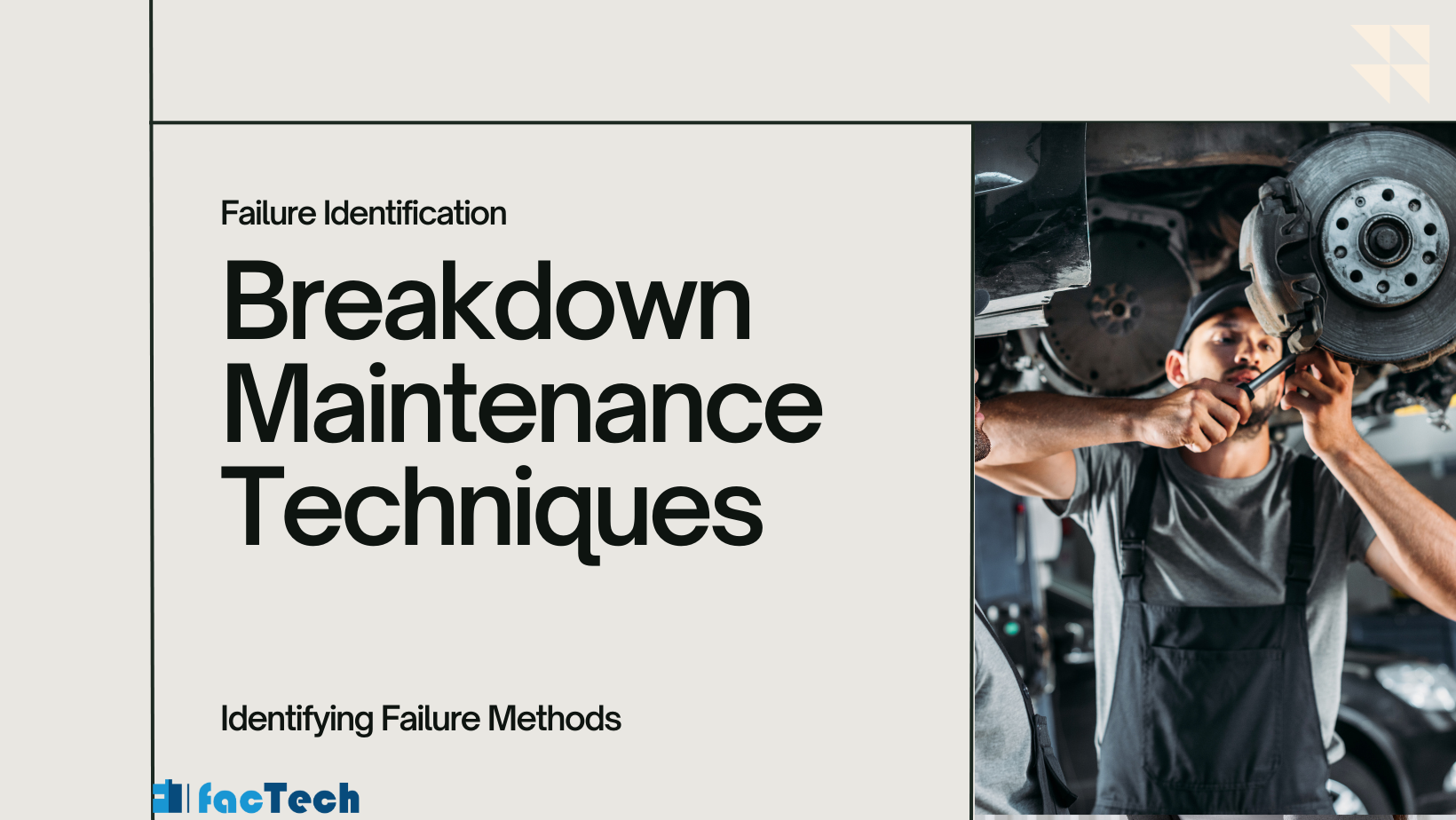
Determining whether an asset has failed or is malfunctioning is the first stage in breakdown maintenance. There are a number of ways to find this, including visual inspections, performance reviews, and staff reports.
2.Problem Diagnosis:
Upon identifying a failure, the underlying reason needs to be ascertained. This entails a comprehensive examination to determine the root cause of the asset’s malfunction.
Crucial Procedures for Diagnosing Breakdown Maintenance Issues:
Immediate Isolation: In order to stop more damage or safety risks, the malfunctioning equipment must be isolated as soon as possible. This could entail locking down a computer, cutting off the power, or limiting access.
assemble information Gather as much data as you can regarding the malfunction. Among other things: When did the failure happen?
What circumstances gave rise to the failure?
Before the failure, were there any odd scents, sounds, or vibrations?
Has this device malfunctioned previously?
Visual Examination:
Perform a comprehensive visual examination of the malfunctioning equipment. Seek for indications of damage, abrasion, or irregularities.
Functional Testing: If at all possible, test the apparatus to identify the particular part or system that isn’t working.
Root Cause Analysis: After identifying the issue, carry out a root cause analysis to ascertain the fundamental source of the malfunction. This could entail:
Analyzing maintenance logs: Exist any signs that the repairs or maintenance were done improperly?
Examining the operational environment: Did the operational parameters of the equipment fall within permissible bounds?
Taking the surroundings into account: Could the failure have been caused by outside variables such as vibration, humidity, or temperature?
Implement preventive actions to lessen the chance of future failures after the equipment has been fixed or replaced. This could consist of:
Formulating a schedule for maintenance: Establish protocols for cleaning, lubrication, and inspections on a regular basis.
Operator training:
Make certain that operators have received the necessary training on how to operate and maintain the equipment.
Performance monitoring: Keep an eye on the machinery’s functioning at all times to spot possible issues before they become serious.
3.Repair or Replacement:
Depending on the diagnosis, the failed component is either repaired or replaced. If repair is affordable and can return the item to its original state, it is frequently chosen. On the other hand, replacement might be more appropriate if the damage is severe or the asset is getting close to the end of its useful life.
4.Restoration and Testing:
The asset is returned to its initial operational state following the completion of the repair or replacement. The asset is then put through rigorous testing to make sure the problem has been fixed and it is operating as intended.
5.Documentation and Analysis: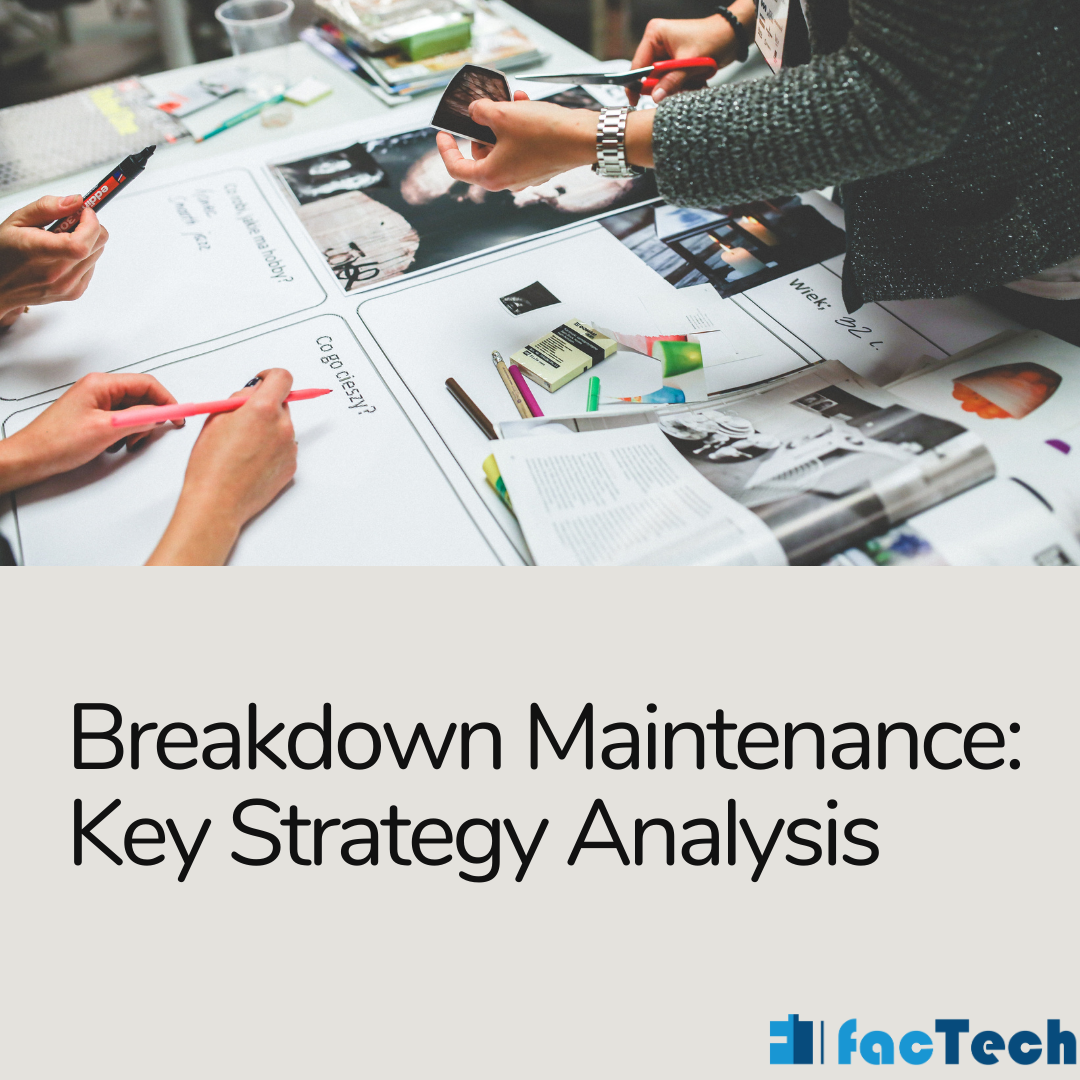
Every step of the breakdown maintenance procedure, including the diagnosis, repairs performed, and any lessons discovered, should be recorded. By using this data, maintenance procedures in the future can be improved and trends can be found.
Reactive maintenance, often known as breakdown maintenance, is a method in which equipment is repaired only after it breaks down. Although this method can save money in the near run, it frequently results in unplanned downtime, higher maintenance expenses, and less reliable equipment. It is crucial to have a well defined breakdown maintenance approach that prioritizes rigorous testing and effective restoration in order to reduce these hazards.
Procedures for Restoration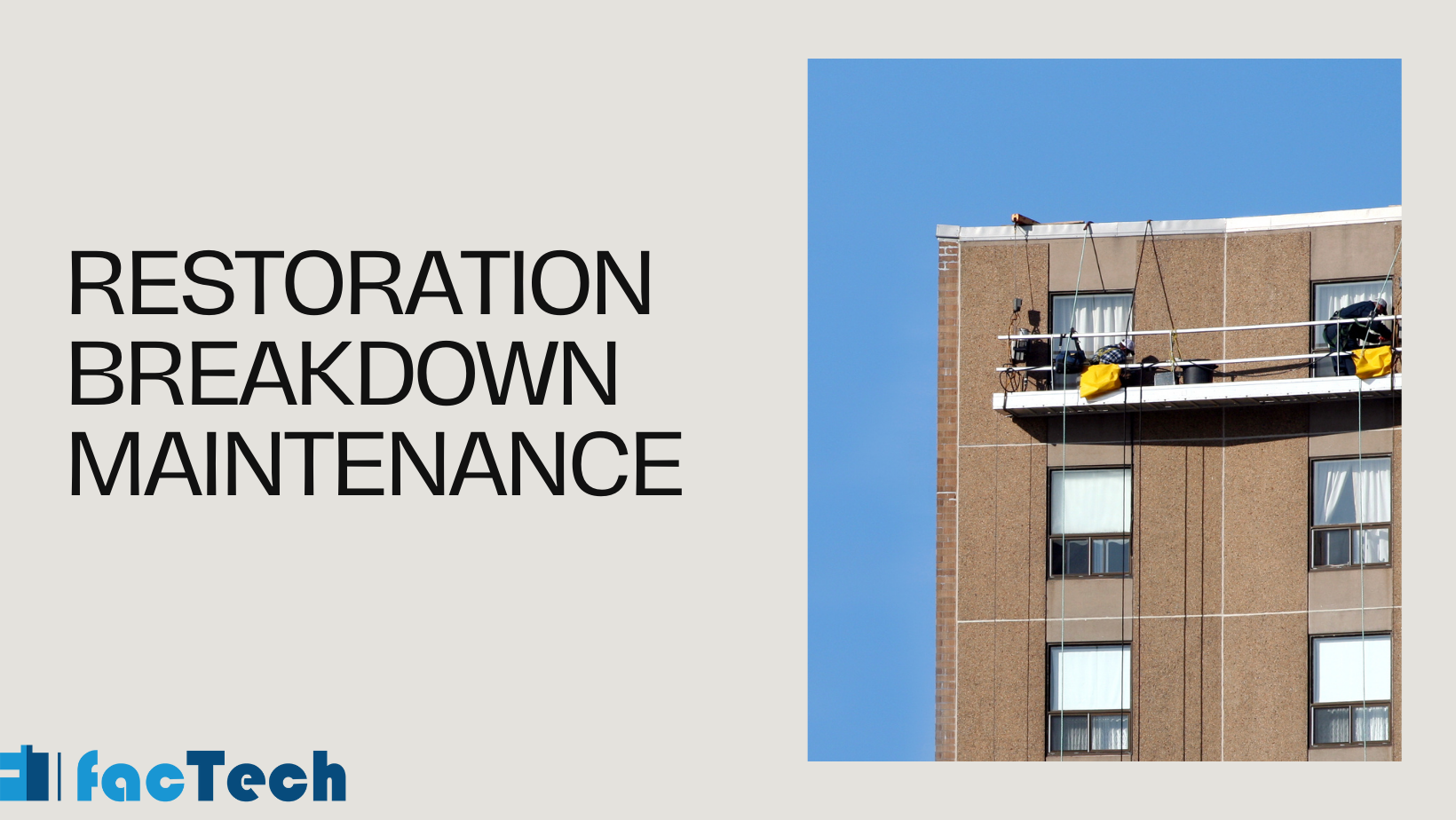
1.Fast Response:
In order to reduce downtime after equipment failure, it is essential to act quickly. Establish a mechanism that notifies maintenance staff right away of problems, and make sure they have the tools and knowledge needed to solve them.
2.Safety First:
Throughout the restoration process, put safety first. To safeguard employees and equipment, carry out a thorough risk assessment and put the necessary safety measures in place.
3.Analyzing the Root Cause:
Examine the reason behind the malfunction to avoid it happening again. To find the fundamental causes of problems and put corrective measures in place, do a root cause analysis.
4.Inventory of Spare Parts:
To speed up repairs, keep a sufficient supply of spare parts on hand. When calculating inventory levels, take into account variables including historical failure rates, lead times for new parts, and equipment criticality.
5.Temporary Solutions:
To restore equipment functionality if rapid repairs are not possible, use temporary solutions. This could entail manual labor, the use of backup equipment, or other stopgap tactics.
Record the malfunction, the repair procedure, and any corrective measures that were carried out. Planning and troubleshooting for upcoming maintenance will benefit greatly from this knowledge.
Methods of Testing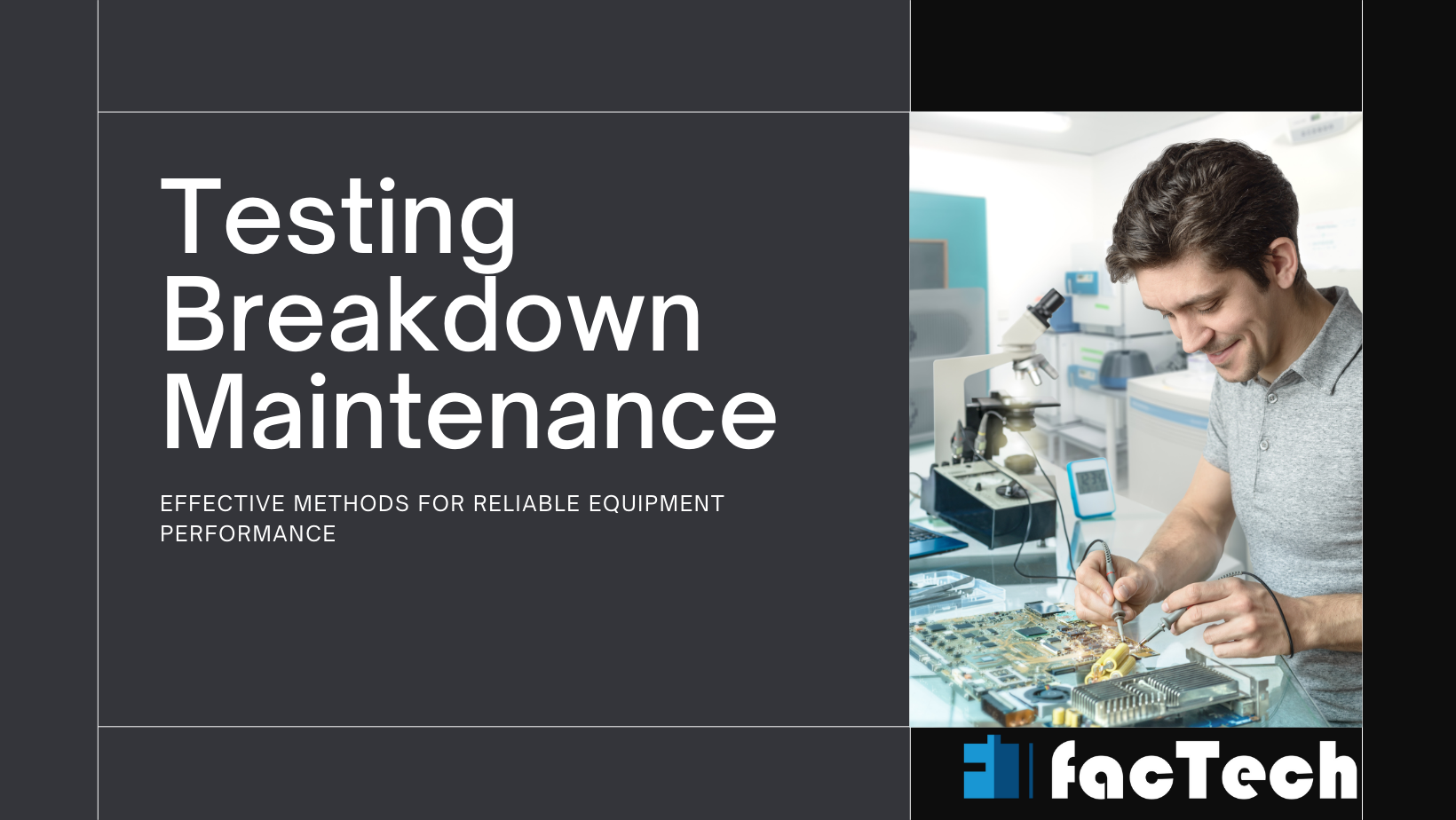
1.Functional Testing:
Perform functional testing to ensure that the equipment is functioning as intended following repairs. To make sure the equipment is operating as intended, check all pertinent settings and features.
2.Performance testing:
Assess the machinery’s functionality to find any flaws or deterioration. Examine performance measures in relation to industry norms or baseline data.
3.Load testing:
If appropriate, apply simulated loads to the machinery to evaluate its dependability and capacity in real-world operating circumstances.
4.Safety Testing:
To make sure the machinery is safe to use, conduct safety tests. Checking mechanical integrity, electrical insulation, and other safety-related criteria may be part of this process.
5.Preventive Maintenance: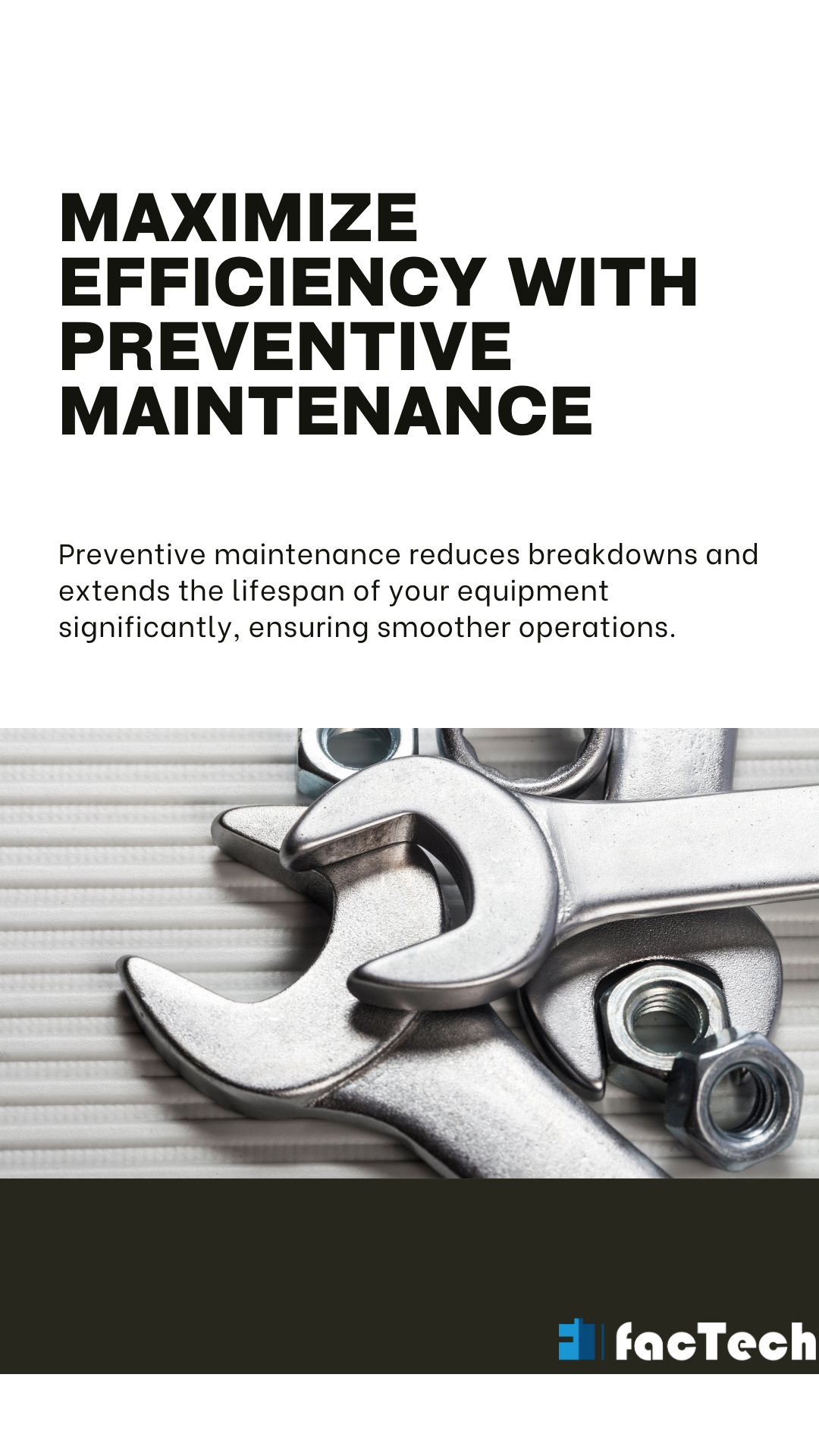
After the equipment has been fully functional again, schedule preventive maintenance chores to keep it operating at peak efficiency and avoid future breakdowns.
Organizations can increase overall equipment reliability, limit downtime, and save maintenance costs by adhering to a clearly defined breakdown maintenance strategy. Ensuring that equipment is restored to full operation and averting future failures requires a focus on effective restoration and extensive testing.
Benefits and Drawbacks of Maintenance Repair
Benefits:
Cost-effective for low-value assets: Breakdown maintenance may be less expensive than preventative maintenance if an asset is cheap to replace. Minimal upfront investment: Scheduled inspections and maintenance tasks don’t demand a large commitment of resources.
Pay attention to significant failures: Breakdown maintenance gives priority to the most pressing problems, guaranteeing that vital equipment is fixed as soon as possible.
Inconveniences: 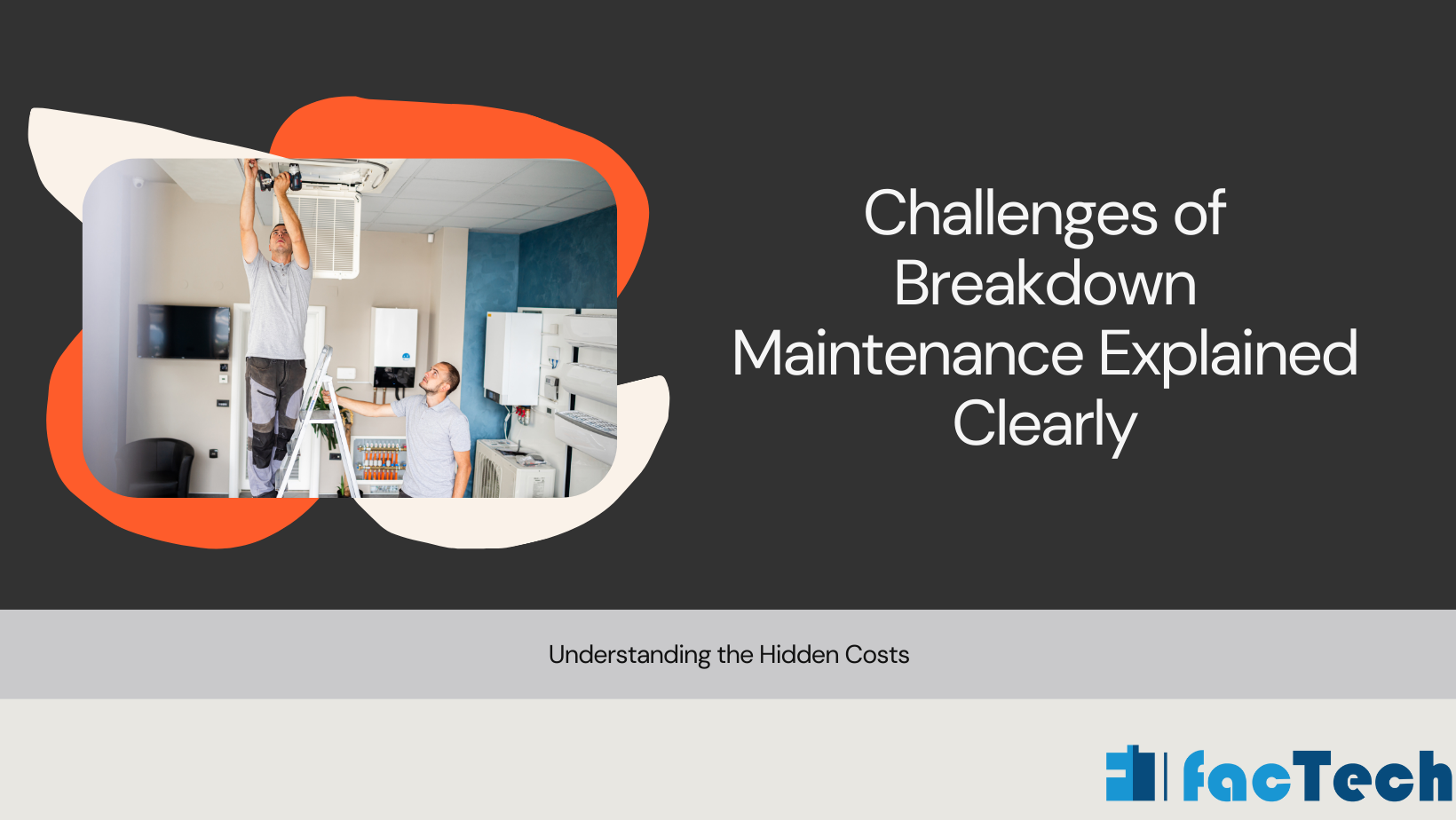
Unplanned downtime: Unexpected failures can cause operations to be disrupted and result in possible losses.
Higher long-term costs: Over time, frequent breakdowns can raise maintenance costs.
Decreased asset lifespan: Recurrent breakdowns can lower an asset’s overall lifespan.
Increased risk of safety hazards: Failed equipment can pose safety concerns to employees and others.
When to Take into Account Maintenance Breakdowns
For some assets or circumstances, breakdown maintenance might be appropriate, such as:
Non-critical equipment: Equipment whose failure does not significantly affect operations.
Low-value assets: Assets that are reasonably affordable to replace.
Reliable assets: If failure patterns are well-understood, it might be possible to predict breakdowns and make plans for them.
Restricted resources: When resources are scarce, breakdown maintenance might be the only practical course of action.
Harmonizing Preventive Maintenance with Breakdown Repair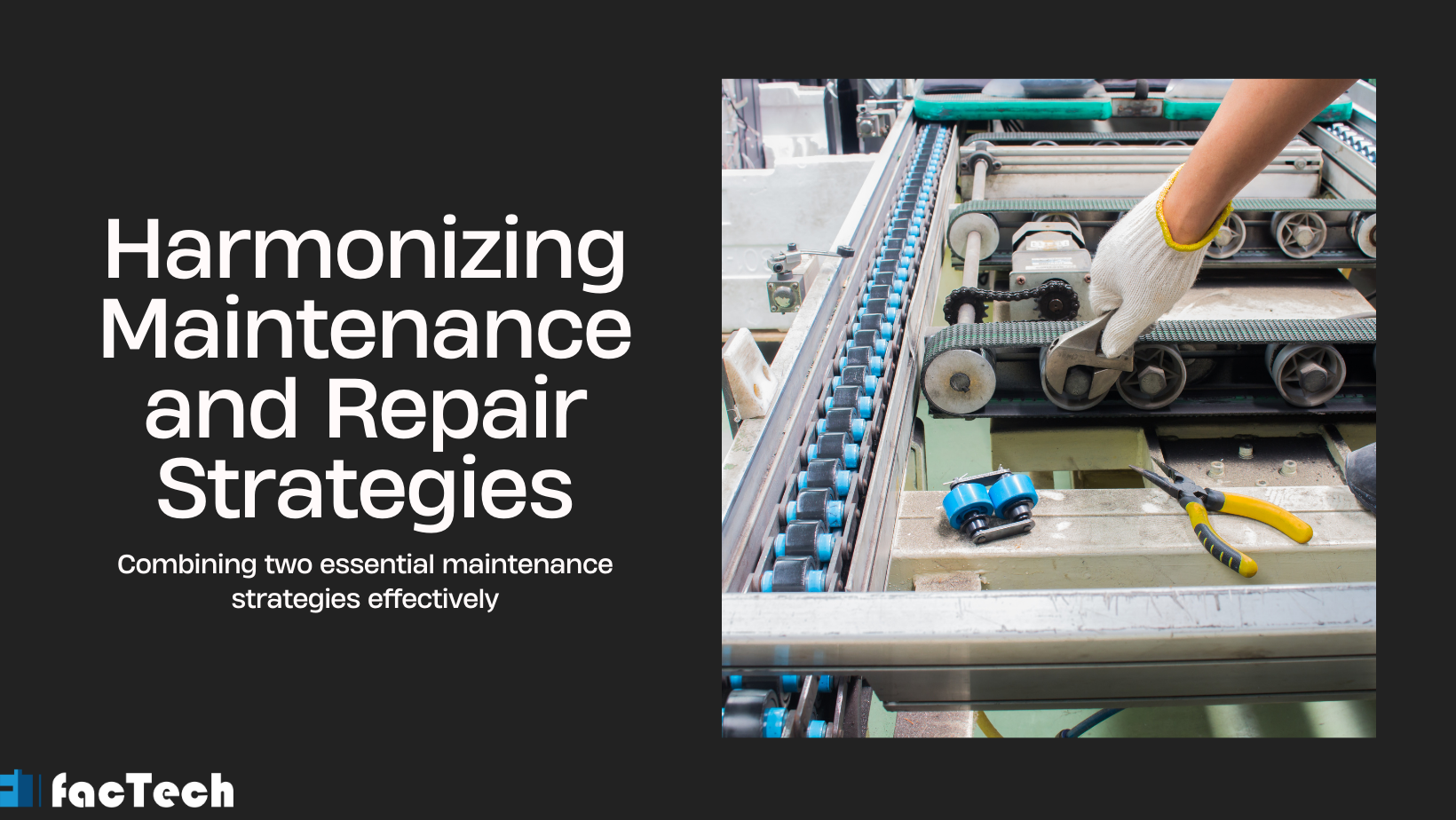
Although breakdown maintenance may be a helpful tactic in some situations, it’s usually advised to take a balanced approach that incorporates both preventative and breakdown maintenance. While breakdown maintenance can deal with unforeseen problems, preventive maintenance can assist avoid breakdowns and increase the lifespan of assets.
Through a meticulous assessment of each asset’s unique requirements, businesses may design a maintenance plan that maximizes asset efficiency and reduces unplanned downtime, taking into account variables like expense, danger, and importance.
Read more:
FAQs
1. First off, what is maintenance for breakdowns?
The goal of breakdown maintenance is to replace or repair equipment only after it breaks down. It’s a reactionary strategy devoid of any proactive actions.
2. What benefits does breakdown maintenance offer?
Reduced starting expenses Preventive maintenance doesn’t require an upfront payment.
Minimal planning entails devoting less time and energy to organizing and preparing.
3. What drawbacks exist with breakdown maintenance?
Unexpected downtime: Equipment malfunctions can cause losses and interfere with operations.
Cost increases: Compared to planned maintenance, emergency repairs and replacements are frequently more expensive.
4. When is it time for breakdown maintenance?
Low-value assets: For machinery having little effect on finances or operations.
Temporary fixes: As you move toward a more proactive maintenance plan.
5. What are some ways to prevent depending just on breakdown maintenance?
Put preventive maintenance into practice by setting up routine maintenance and inspections to avert malfunctions.
Carry out condition monitoring Utilize data analysis and sensors to find any problems before they become breakdowns.
Enhance the planning of maintenance: Create a thorough maintenance plan that strikes a balance between dependability and expense.
Purchase replacement parts: To reduce downtime, keep an adequate supply of spare parts on hand.
6. What are a few typical reasons why equipment malfunctions?
Wear and tear: Normal aging-related wear and tear.
Equipment misuse or neglect is an example of improper use or maintenance.
Environmental factors: Adversities such as high humidity or low temperatures.
Defects in the manufacture or design: Problems with the apparatus itself.
